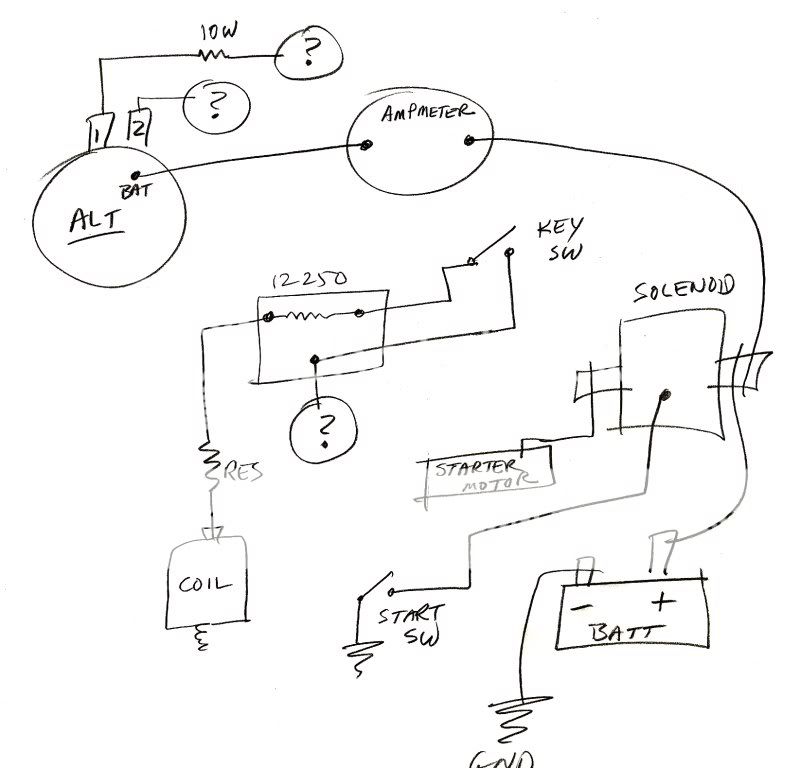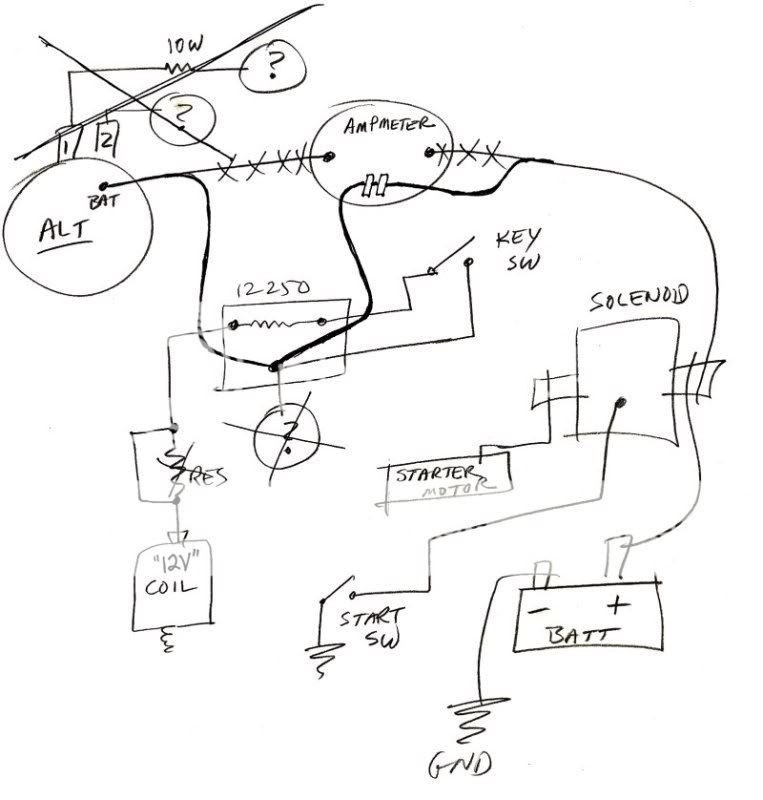Anonymous-0
Well-known Member
I got the complete kit: 12v coil, correct alt. pulley, resistor, brackets, wiring harness etc.
I wired as per the instuctors. I wasnt sure on a few things, but did the best I could.
The few things:
1. the existing ammeter wire went thru a metal circel not hard wired to the left and right screws (assume the old way used induction) thus as per instructions, used the left and right screws.
2. The kit came with a 12v coil and a resistor. Instructions stated use of the resistor IF NEEDED. So I figured I needed it, and put it per instructions..in-line between the coil and the left post of the existing resistor. I mounted it under the ammeter on the firewall.
When I first tried to start it, there was a few sparks in the vicinity of the ammeter/new resistor. But she started anyway. I ran her for a little while...5 min, then drove her down to the barn (100 yds away). Then I plugged her in(water heater..she doesnt start very well in the cold weather...THUS THE MAIN REASON I WENT TO THE 12 VOLT SYSTEM).
By the way, while I had her opened up, replaced the rotar and the consensor, didnt mess with the points.
The next day...nothing...zip...nada. She turns over fine. Im thinking its got to be no gas or no spark. The gas should be fine, thus no spark.
Thoughts???
Brett
I wired as per the instuctors. I wasnt sure on a few things, but did the best I could.
The few things:
1. the existing ammeter wire went thru a metal circel not hard wired to the left and right screws (assume the old way used induction) thus as per instructions, used the left and right screws.
2. The kit came with a 12v coil and a resistor. Instructions stated use of the resistor IF NEEDED. So I figured I needed it, and put it per instructions..in-line between the coil and the left post of the existing resistor. I mounted it under the ammeter on the firewall.
When I first tried to start it, there was a few sparks in the vicinity of the ammeter/new resistor. But she started anyway. I ran her for a little while...5 min, then drove her down to the barn (100 yds away). Then I plugged her in(water heater..she doesnt start very well in the cold weather...THUS THE MAIN REASON I WENT TO THE 12 VOLT SYSTEM).
By the way, while I had her opened up, replaced the rotar and the consensor, didnt mess with the points.
The next day...nothing...zip...nada. She turns over fine. Im thinking its got to be no gas or no spark. The gas should be fine, thus no spark.
Thoughts???
Brett




